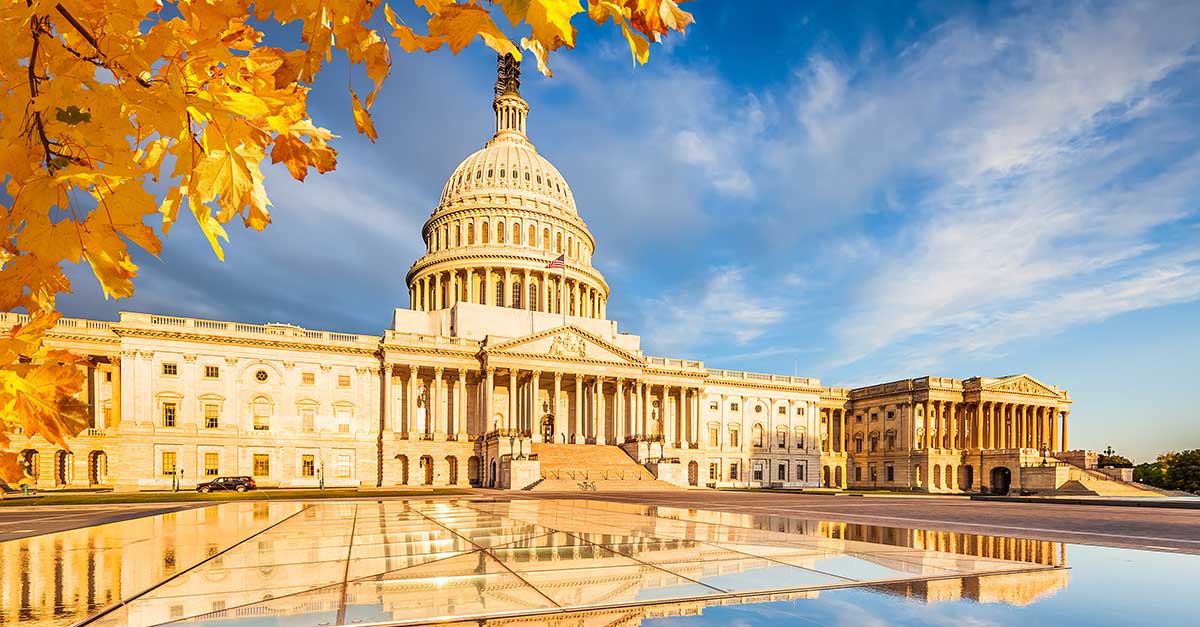Welcome to another round of PYA Washington Updates. Today is National Compliance Officer Day. They certainly deserve the recognition, having had a busy year keeping up with the latest from Washington!
Government Shutdown Watch
Last Friday, the House passed a continuing resolution (CR) to fund the government at FY2025 levels through November 21. The Senate, however, did not pass the Republican stop-gap spending measure nor the Democrats’ competing version. Congress has been in recess this week, so now it’s down to the wire, with a partial government shutdown taking effect at 12:01 am ET on October 1 absent Congressional action and a Presidential signature.
Not one to let a good crisis go to waste, the White House budget office is instructing federal agencies to prepare reduction-in-force plans for mass firings during a possible government shutdown. These plans call for permanently reducing the size of the federal workforce, not just scaling down for the duration of the shutdown.
H-1B Visa Fee
Last Friday, the Trump administration announced it would begin charging employers $100,000 to issue H-1B visas for foreign workers. Health care employers – especially those in rural and underserved areas – use H-1B visas to sponsor doctors and medical students. Much concern has been expressed in the last week about the impact of these new fees will have on rural hospitals’ ability to meet their communities’ needs. Right now, there’s a concerted push to convince the administration to exempt doctors and medical students from the fees.
Pharmaceutical Tariffs
In a Truth Social post last evening, President Trump announced the following:
“Starting October 1st, 2025, we will be imposing a 100% Tariff on any branded or patented Pharmaceutical Product, unless a Company IS BUILDING their Pharmaceutical Manufacturing Plant in America. ‘IS BUILDING’ will be defined as, ‘breaking ground’ and/or ‘under construction.’ There will, therefore, be no Tariff on these Pharmaceutical Products if construction has started.”
The President did not clarify whether this new policy overrode the announced deal with the European Union capping tariffs on pharmaceuticals at 15%.
Impact of Medicaid Work Requirements on Hospitals
Last week, the Commonwealth Fund published its analysis of the financial impact of OBBBA’s Medicaid work requirements on hospitals. Basing their analysis on the experience of two states that implemented (and later repealed) work requirements, Arkansas and New Hampshire, researchers concluded “[h]ospitals in Medicaid expansion states could see operating margins reduced by an average of 11.7 percent to 13.3 percent. Safety-net hospitals could be disproportionately impacted: their operating margins could fall by an average of 25.9 percent to 29.6 percent, and even more in certain states and in rural areas.”
PYA Webinars – Washington Updates
On October 1 — the first day of the new federal fiscal year — PYA will present a webinar on the latest healthcare-related developments in Washington. Register here.
Please do not hesitate to contact us if you have any questions regarding these latest developments. You can also continue to check PYA’s website for updates.
Executive FAQ / Key Takeaways
Will there be a government shutdown on October 1, 2025?
Without a new funding bill, a partial shutdown begins at 12:01 a.m. ET on October 1. Hospitals and healthcare providers should prepare for possible delays in federal payments and program oversight.
How long could federal funding last under the current proposal?
The House approved a continuing resolution funding government at FY2025 levels through November 21, but the Senate has rejected both party proposals.
What actions is the White House taking ahead of a shutdown?
Federal agencies have been told to prepare permanent workforce reduction plans, signaling a long-term cut to government staffing that could disrupt healthcare programs and regulatory functions.
What is the new H-1B visa fee and why does it matter for healthcare?
The administration announced a $100,000 employer fee for each H-1B visa. Hospitals in rural and underserved areas—who rely on these visas to recruit physicians and medical residents—could face major staffing shortages.
Is there an effort to protect healthcare providers from the H-1B fee?
Yes. Hospital associations and healthcare leaders are lobbying for exemptions for doctors and medical students to prevent workforce gaps.
What new tariffs will apply to pharmaceuticals?
Starting October 1, 2025, a 100% tariff will apply to branded or patented drugs unless the manufacturer has broken ground on a U.S. facility. This could significantly raise costs for providers and patients.
How does this tariff align with existing trade agreements?
It’s unclear whether this new 100% tariff overrides the U.S.–EU deal capping pharmaceutical tariffs at 15%, creating uncertainty for supply chains.
What is the projected financial impact of Medicaid work requirements under OBBBA?
Hospitals in Medicaid expansion states could see margins decline 11.7%–13.3% on average. Safety-net hospitals face even greater risk, with projected margin reductions of 25.9%–29.6%, especially in rural communities.









